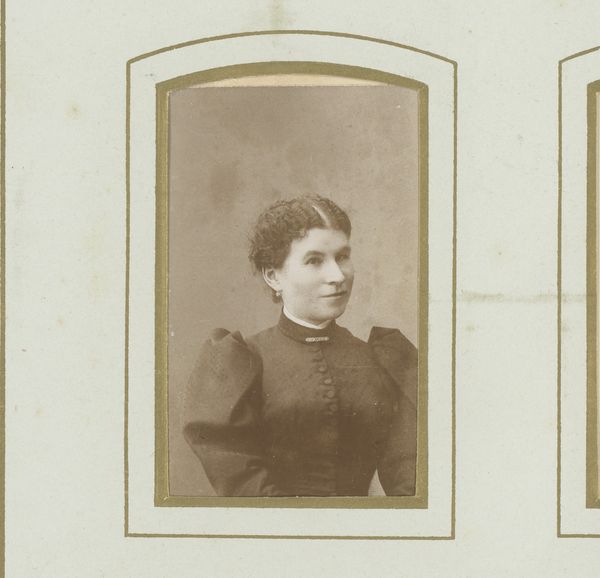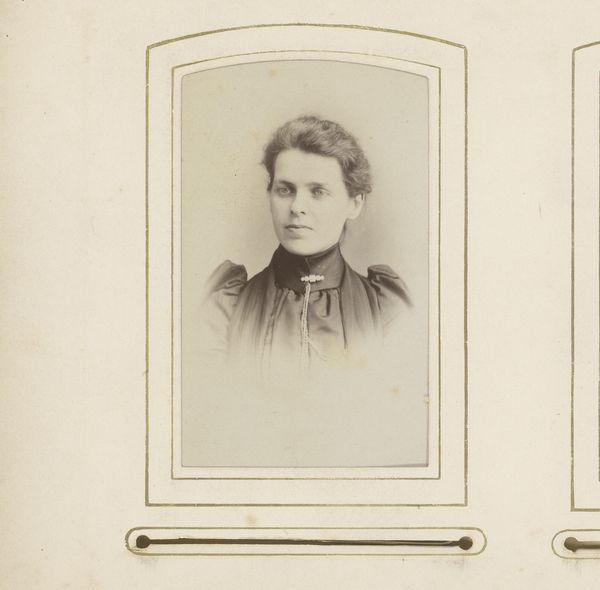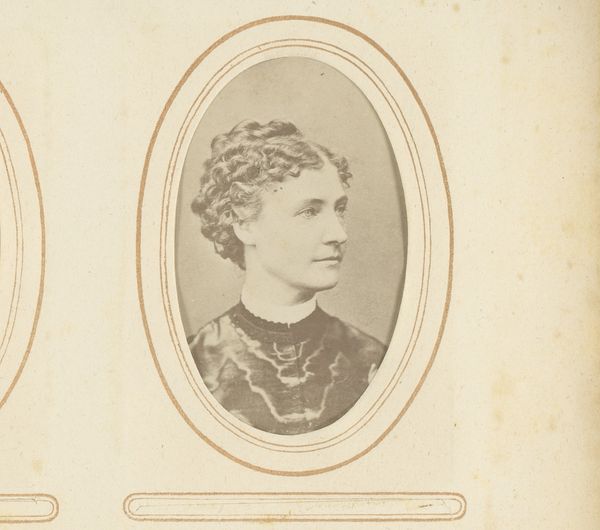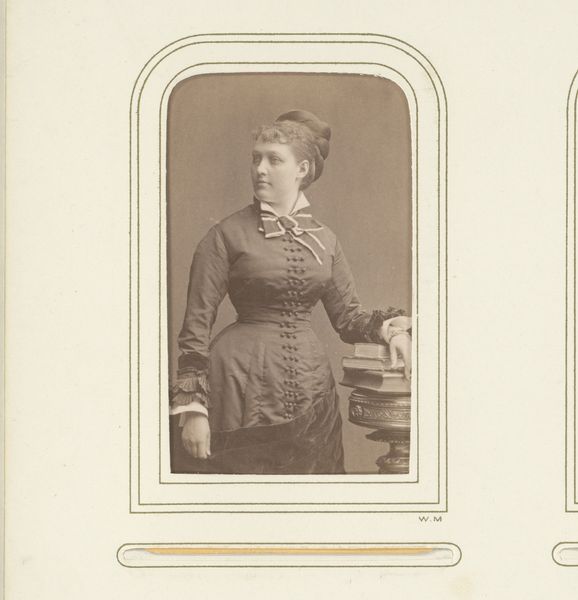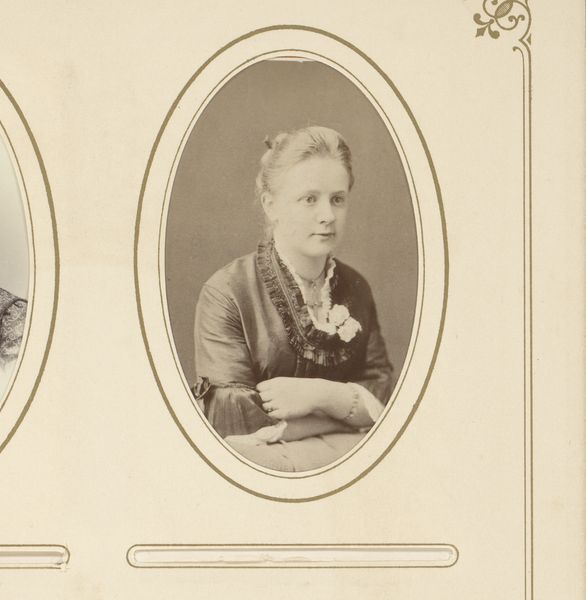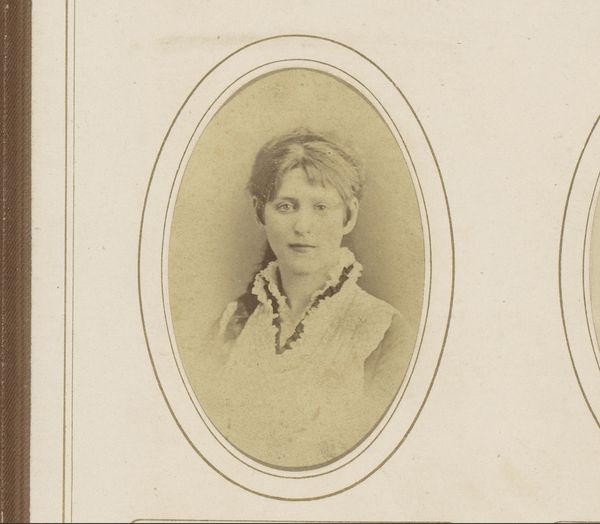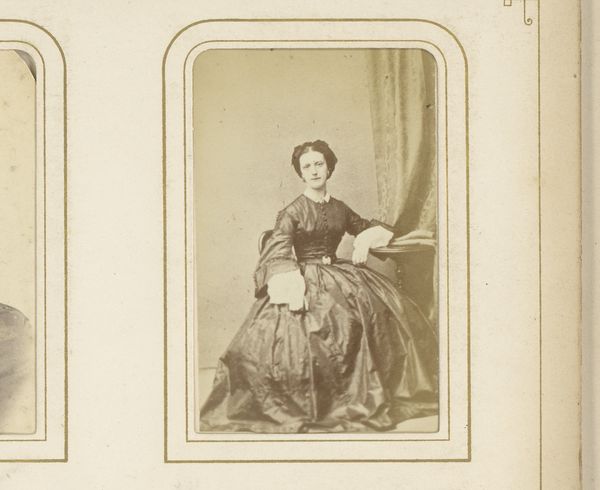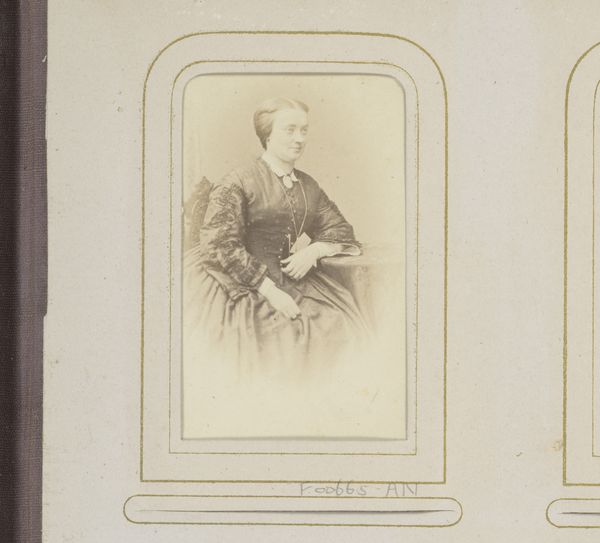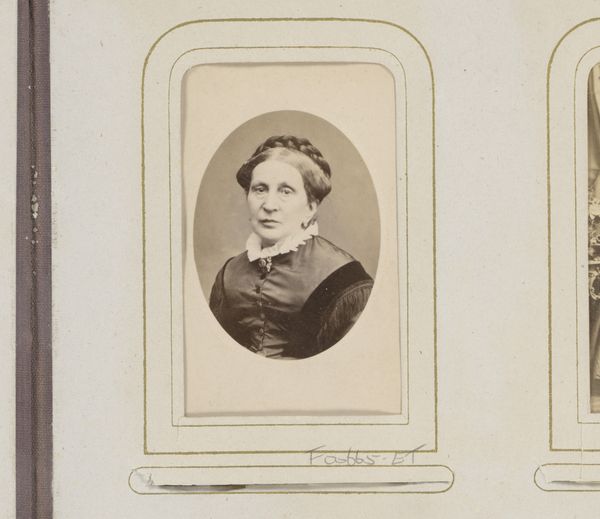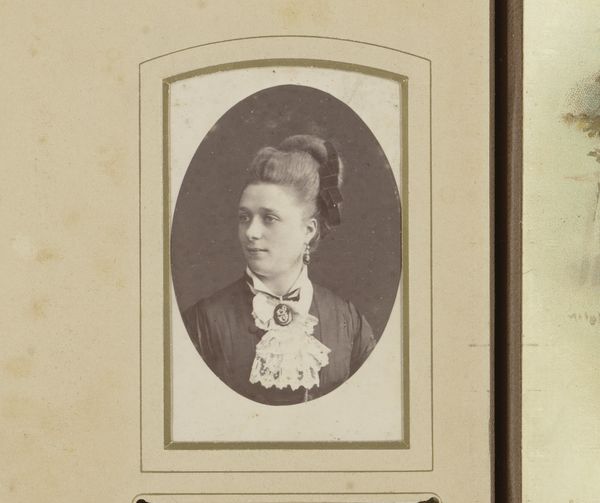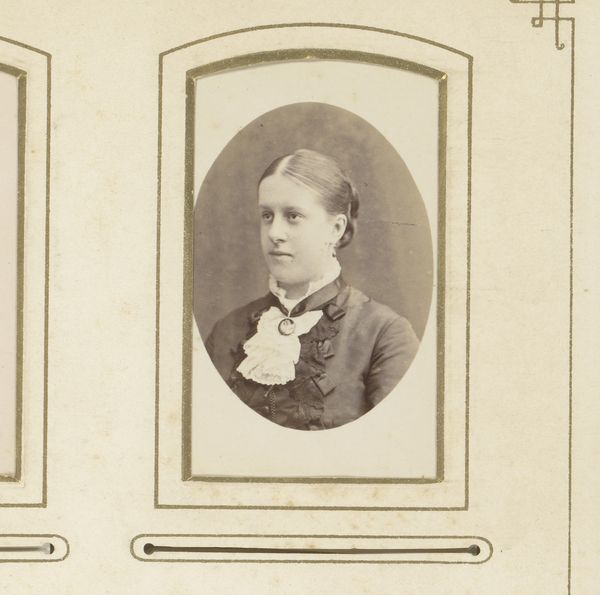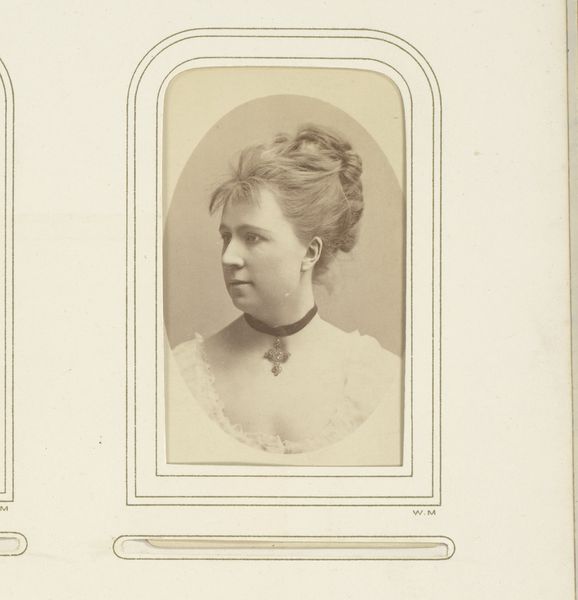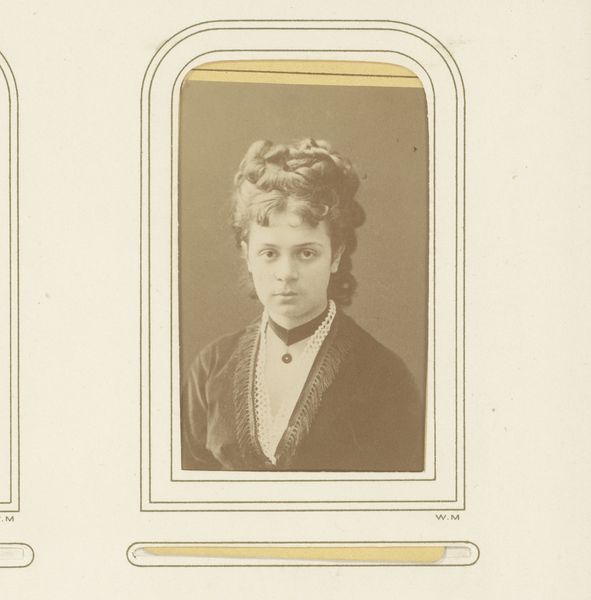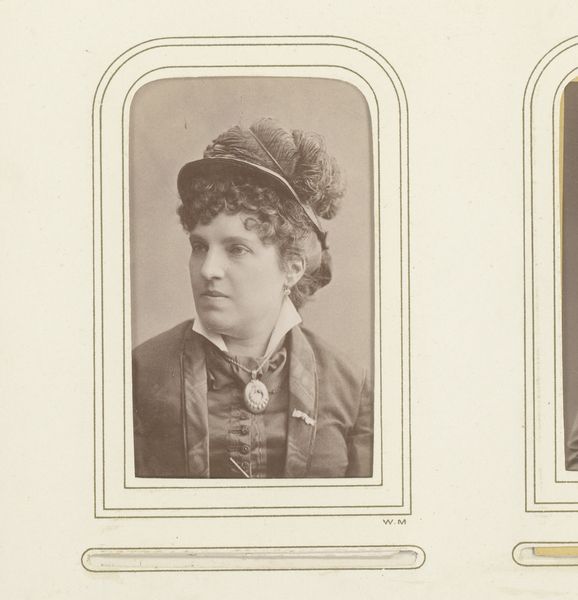
photography
#
portrait
#
photography
Dimensions: height 84 mm, width 50 mm
Copyright: Rijks Museum: Open Domain
Curator: We’re looking at "Portret van een vrouw," a photographic portrait created sometime between 1850 and 1900, attributed to A. Zagel. Editor: My first impression is one of quiet dignity. The sepia tones create a subdued, almost somber mood. Curator: The composition is carefully structured; observe the oval frame, how it gently corrals the sitter's face. It invites the viewer to consider the face within, divorced from its larger context. Editor: Yet, doesn't this kind of formalized portraiture inherently reinforce social hierarchies? Photography in that era was not a readily available medium. Only certain people, usually upper middle class or aristocracy, could afford it, and it certainly took hours to produce in a dark room. Curator: Precisely. The image functions on two planes. First as a depiction of the subject. But then, as an exercise in formal constraint and almost rigid structuring of reality. The photographer controls light, composition, and affect to create this ideal. Editor: And what about the materiality? Looking at the frame around the photograph itself—the materials chosen for it tell us just as much about the values and aspirations of the time. Its golden design, while not intrinsically valuable, elevates the status of the person within the photograph. Curator: An excellent point. We also must consider the subject's clothing. See how the collar contrasts against the dark jacket? What semiotic weight does it carry in relationship to the portrait itself? Editor: The craftsmanship—from the making of the photo emulsion to constructing its gold gilded frame—speak volumes. It gives voice to otherwise marginalized stories: namely, a historical record of the unnamed maker in this elaborate photographic portrait. Curator: I appreciate the insight you bring from your materialist point of view. Editor: And I your sensitivity toward the subject within. It always strikes me how images are fabricated rather than naturally created objects.
Comments
No comments
Be the first to comment and join the conversation on the ultimate creative platform.
